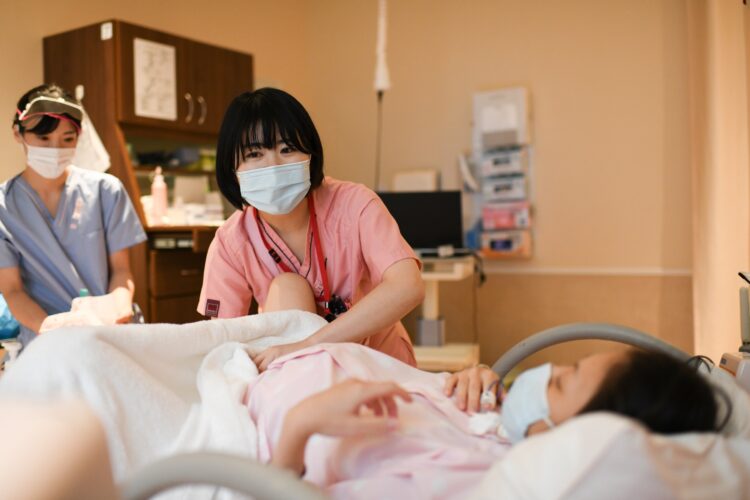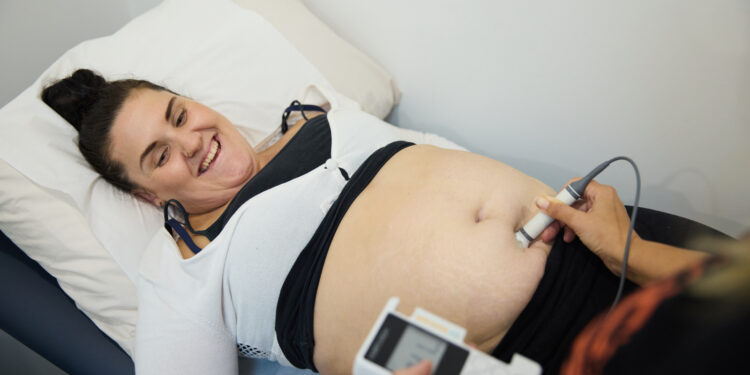Appropriate use of Intervention in Childbirth

Background
Childbirth*, should be a normal, physiological event for the majority of women throughout the world. For some women, it may become life-threatening, especially in low-resource or emergency settings where, in cases of complications, affordable, accessible, acceptable and quality care may not be available (1). The risk of death or illness can be reduced, for those women where intervention is indicated, through the use of evidence-based interventions and technology (2).
ICM recognises that technological advances in maternal and newborn care have significantly reduced maternal and infant mortality. ICM is concerned that these interventions have become commonplace and in some contexts routine. Used appropriately, they can be life-saving. Routine use for women experiencing a healthy pregnancy, however does not reflect reliable evidence and only serves to transform childbirth from a normal physiologic process into a potentially harmful medical or surgical procedure, with significant health and social consequences. ICM acknowledges that every intervention potentiates the possibility of adverse effects and further risks that generates the need for more interventions with their own inherent risks. The potential consequences for the woman and her baby to unnecessary interventions make it crucial that midwives work with other professionals to promote normal childbirth and advocate for policies that focus on ensuring informed consent and alternative choices.
Childbirth is influenced by culture, tradition, religion and psychosocial factors, and is a family event. Reliable evidence indicates optimal outcomes are best achieved utilising a healthoriented rather than a disease-oriented model of care for the woman and her infant. Women have the right to make informed decisions about the use or non-use of intervention, and should therefore be active participants in decisions that affect their own and their newborns’ health. In keeping with the ICM International Code of Ethics for Midwives, ICM believes that women have the right to up-to-date, complete and understandable information on the risks and benefits of each intervention proposed in their care.
* Childbearing refers to pregnancy, birth and the postpartum period
(1) http://www.thelancet.com/pdfs/journals/lancet/PIIS0140-6736(16)31528-8.pdf
(2) https://www.researchgate.net/profile/Koyejo_Oyerinde/publication/270107661_The_global_met_need_for_emergency_obstetric_ care_A_systematic_review/links/54b530180cf26833efd0762d.pdf
Position
In keeping with the basic premise, supported by reliable evidence, that childbirth for most women should be a normal, life-cycle event and in order to enhance the well-being and health outcomes of mothers and their newborn, ICM urges midwives to only use or promote the use of intervention during childbirth when indicated…
ICM calls on governments and other organisations to ensure every woman’s right to physically accessible, financially affordable and socially and culturally acceptable quality care during childbirth, including access to and options for lifesaving interventions.
Recommendations
Member Associations are urged to use this statement to highlight the midwife’s role in the use and evaluation of any interventions and technology during pregnancy and childbirth. The statement also upholds a partnership with women as a model of care to maternity care provision.
ICM urges midwives to:
- provide information to women and their families that promotes the understanding of childbirth as a normal life process and enables women to make informed choices;
- promote practices that enhance the normal physiological processes of pregnancy and childbirth as well as support the psychological, social, spiritual and cultural aspects of pregnancy and birth;
- take measures to avoid unnecessary interference in the progress of normal labour and birth;
- promote their expert knowledge and skills in normal childbirth among maternal and newborn health care providers and policy makers;
- create collaborative education opportunities on normal childbirth in order to build the confidence of all maternal and newborn health care providers to support women to give birth without unnecessary and potentially harmful interventions;
- advocate for the fair allocation of health resources that support the needs of women and their babies;
- understand and implement life-saving skills, including the use of technology, in a timely and appropriate manner;
- participate in the design and evaluation of interventions during childbirth, including the ethical use of technology, according to the following criteria:
- when there is a clear and present danger to the health of mother or baby that can be removed, or minimised by intervening with the use of technology;
- when the benefits of its use outweigh the risks to mother or baby or both;
- when both the midwife and the woman/family fully understand how the technology works and why the intervention is indicated;
- when the woman has been given complete and understandable information about the proposed use of technology and interventions and can, therefore, make an informed decision.
Other Relevant Documents
- Campbell et al. 2016. The scale, scope and coverage and capability of childbirth care. The Lancet. http://www.thelancet.com/pdfs/journals/lancet/PIIS0140-6736(16)31528-8.pdf
- Evans DB, Hsu J & Boerma T. 2013. Universal health coverage and universal access. Bulletin of the World Health Organization 2013;91:546-546A
- Hazard, B. 2016. Why does it matter where and how women give birth? Pregnancy Birth and Beyond. http://www.pregnancy.com.au/resources/birth-stories/vbac_stories/why-does-itmatter-where-and-how-women-give-birth.shtml [accessed 28 April 2017]
- Hodnett ED, Gates S, Hofmeyr GJ, & Sakala C. 2013. Continuous support for women during childbirth. Cochrane Database of Systematic Reviews. Issue 7. Art. No.: CD003766. http://www.childbirthconnection.org/maternity-care/ [accessed 29-11-2016]
- Jansen L, Gibson M, Carlson Bowles B & Leach J.2013. First do no harm: interventions during childbirth. Journal Perinatal Education. Spring; 22(2): 83–92.
- UNESCO. 2005. Universal Declaration on Bioethics and Human Rights. Paris WHO. 2009. WHO Recommended interventions for improving Maternal and Newborn Health. http://apps.who.int/iris/bitstream/10665/69509/1/WHO_MPS_07.05_eng.pdf?ua=1 [accessed 28 April 2017]
- White Ribbon Alliance. 2011. Respectful Maternity Care: The Universal Rights of Childbearing Women. Washington
Adopted at Brisbane International Council meeting, 2005
Reviewed at Toronto International Council meeting, 2017
Due for next review 2023
PS2011_0032017





